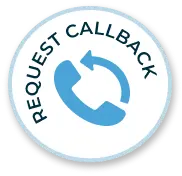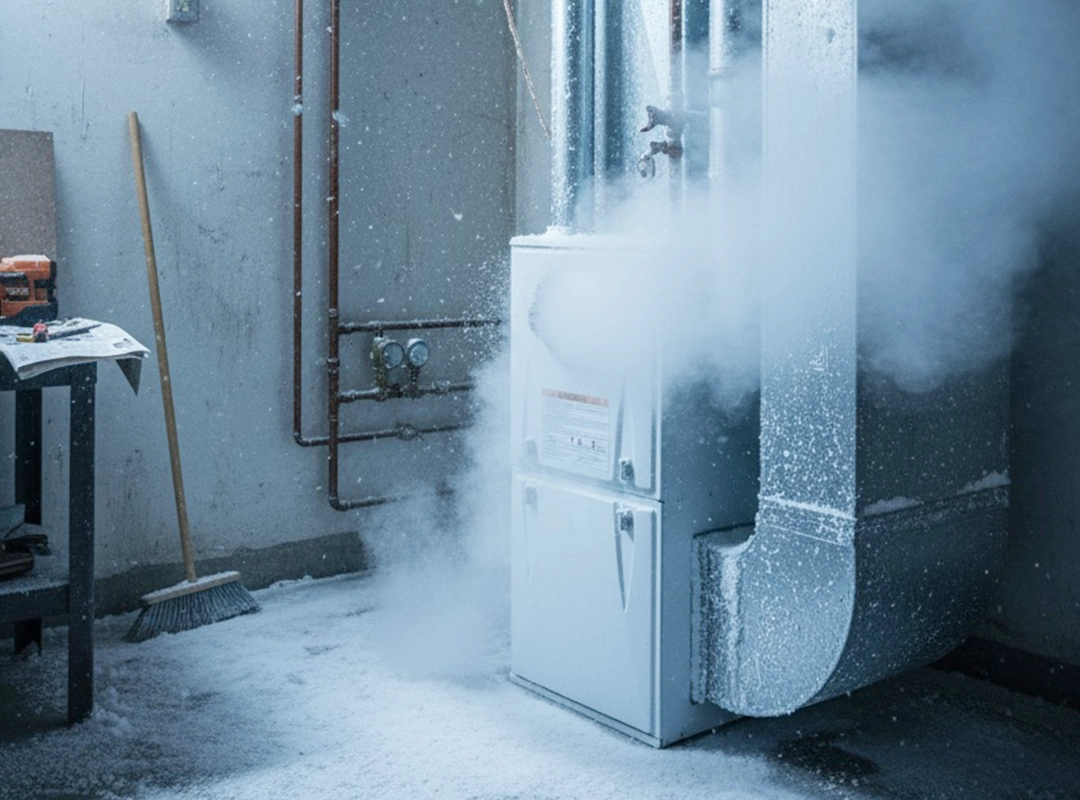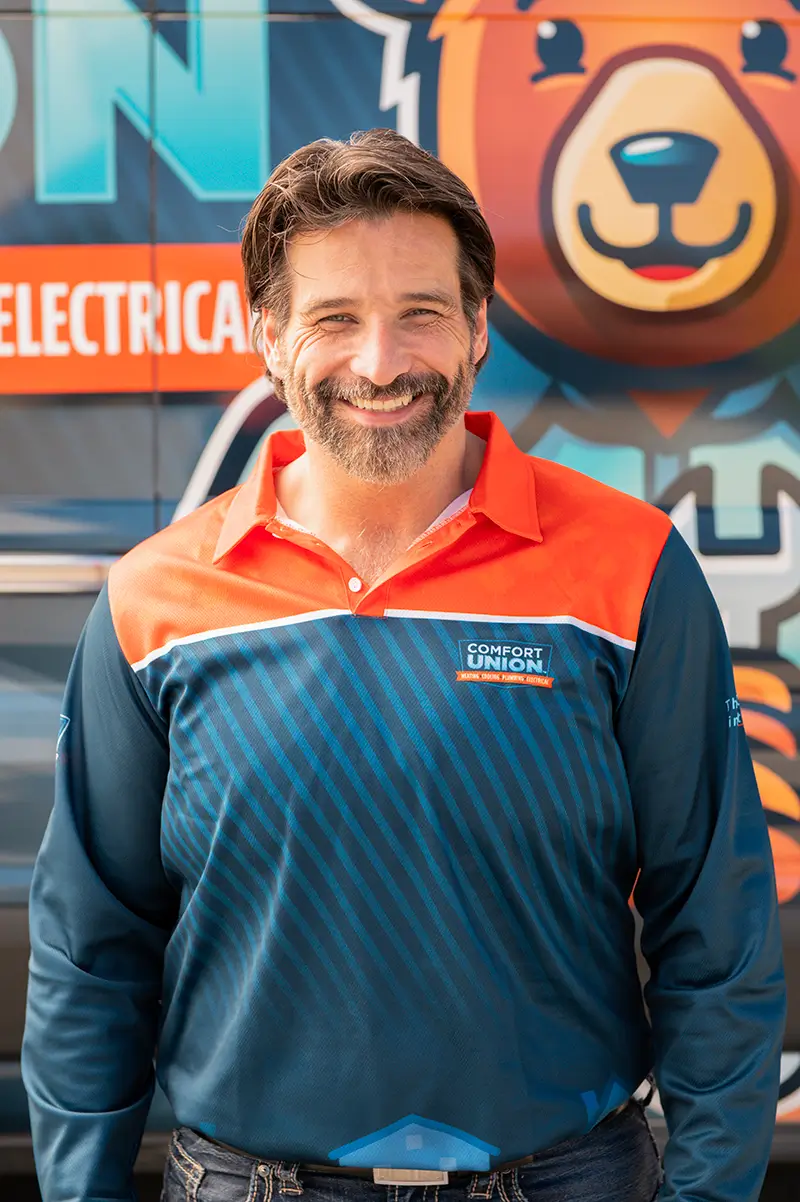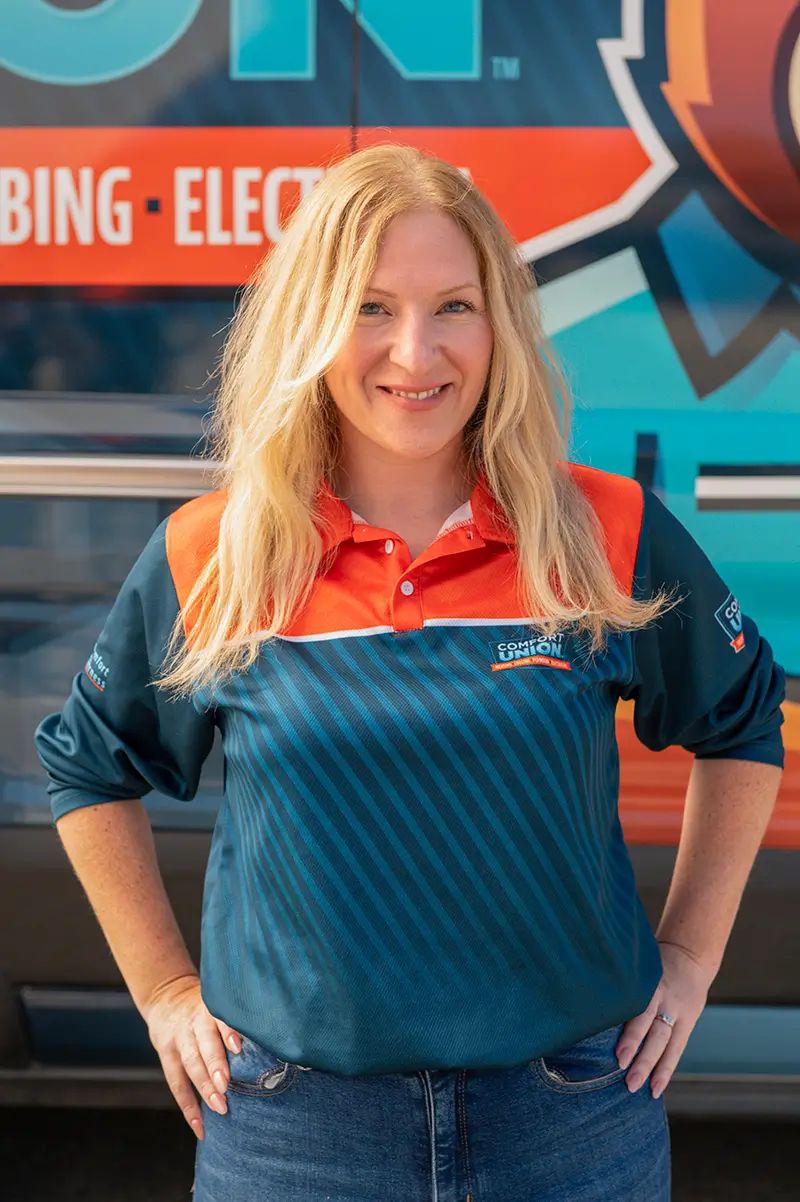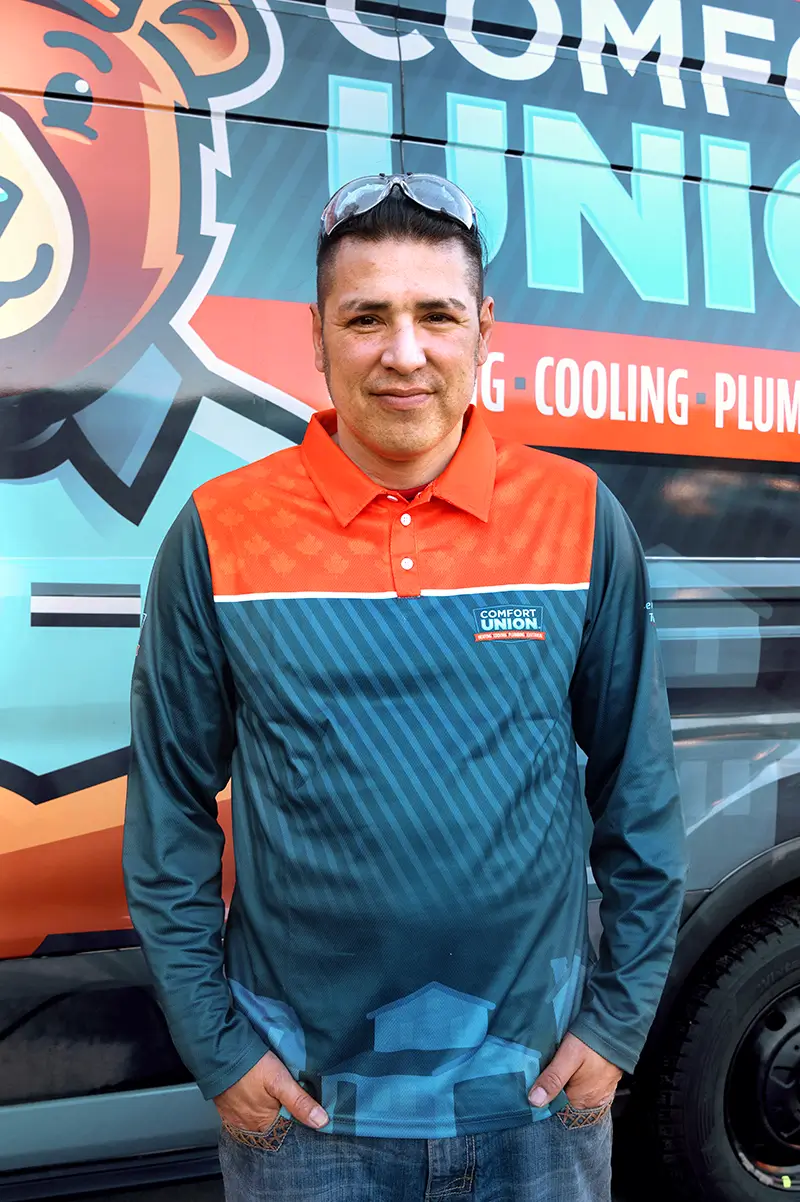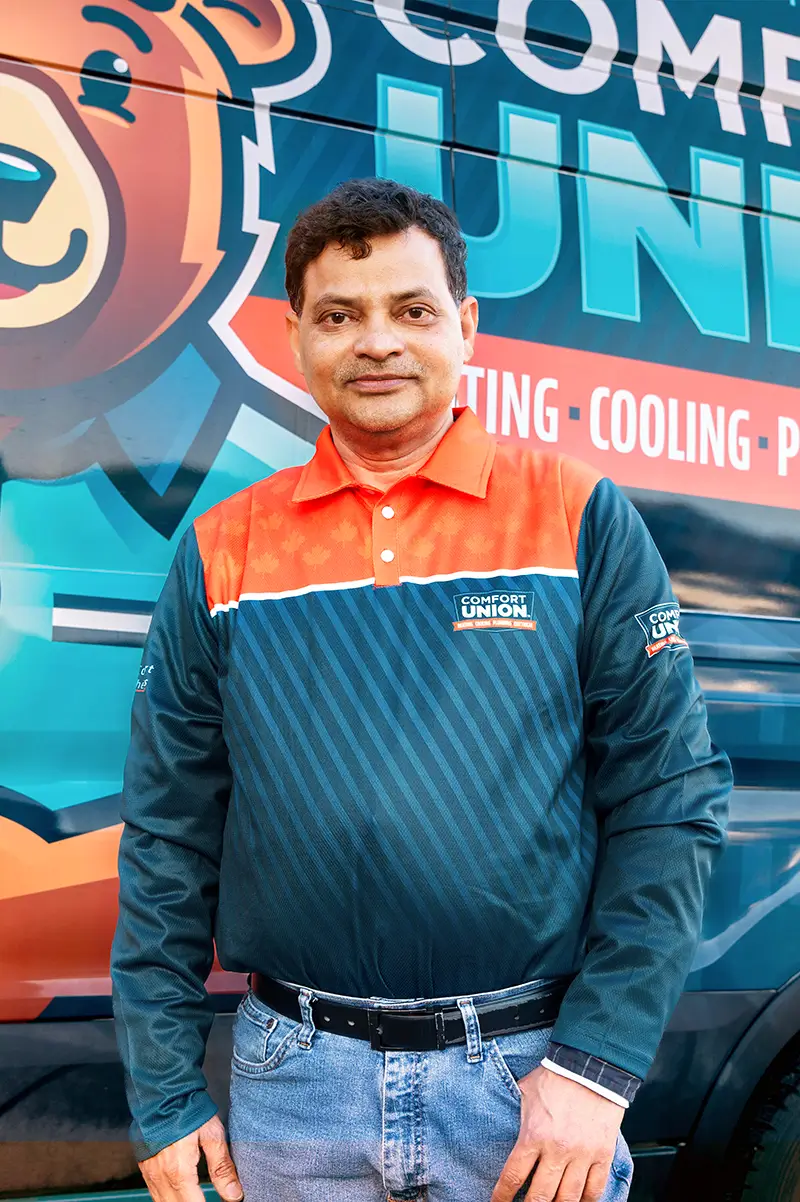In Calgary, furnaces often run 7+ months a year, handle rapid temperature swings, and operate in extremely dry air. These conditions cause parts like flame sensors, ignitors, blower motors, and ductwork to wear out faster than in milder provinces like BC or Ontario.
Cold air from a furnace isn’t always a catastrophic failure, but it’s almost always a sign something needs attention before a full breakdown hits.
Need a New Furnace?
With Flexible Financing Options
What “Cold Air from Furnace” Means (and Why It Happens in Calgary)
Your furnace is designed to ignite fuel, warm air, and then circulate it through ducts. If any part of that chain fails, airflow restriction, ignition issues, clogged sensors, overheating, or a tripped safety switch, the furnace will continue blowing air but without heat.
Calgary’s climate adds extra stress:
- Dry air increases dust buildup, clogging filters and sensors faster
- Extreme lows (-20 to -35°C) force furnaces to run longer, heightening wear
- Old communities like Bowness, Acadia, or Dover still have aging ductwork
- Newer developments like Livingston or Seton use high-efficiency furnaces that are more sensitive to airflow or pressure issues
This is why cold air from furnace is among the most common winter HVAC service calls in the city.
Top Causes of a Furnace Blowing Cold Air
Below is a more complete set of causes. Beyond the typical “filter” and “thermostat” explanations, this provides deeper value and context that Google rewards.
1. Incorrect Thermostat Mode or Fan Settings
This is the most common homeowner mistake.
- If the fan is set to ON, it will run even when the burner isn’t firing, resulting in cool air.
- A miscalibrated or sunlit thermostat can prematurely shut off heating cycles.
Local insight: Thermostats placed near drafty entryways, common in Calgary’s split-level homes, often trigger cold-air complaints.
2. Clogged Furnace Filter Causing Overheating
In Calgary’s dusty, dry winters, filters can clog twice as fast. Restricted airflow makes the furnace overheat, forcing the high-limit switch to shut the burners off while the fan keeps blowing cool air.
3. Gas Supply Issues or Interrupted Fuel Source
If the gas valve is partially closed, ATCO recently performed service, or your pilot line is obstructed, the furnace will run the fan but never ignite.
4. Ignitor Failure, Pilot Problems, or Dirty Flame Sensor
Modern furnaces rely on a clean flame sensor to confirm safe combustion. If it’s dirty, corroded, or misaligned, the furnace will ignite briefly and immediately shut down.
Cold weather fact:
Flame sensors in Calgary tend to fail more frequently due to extreme dryness, which accelerates carbon buildup.
5. Overheating from Blocked Vents or Grilles
Closed vents increase static pressure inside the ducts. Calgary homeowners often block vents in unused basement rooms, unknowingly causing overheating in their systems.
6. Duct Leaks, Disconnected Runs, or Uninsulated Areas
Old homes in areas like Forest Lawn or Killarney often have duct leaks that suck in freezing attic or crawlspace air, leaving vents blowing cold.
7. High-Efficiency Furnace Condensate Blockages (Unique + EEAT)
Modern 90–96% AFUE furnaces create condensation. If the drain line freezes, fills with sludge, or backs up (common in Calgary), the furnace enters a lockout and blows cold air.
8. Furnace Lockout or Safety Shutdown
Repeated ignition failures trigger a built-in safety mode where the blower runs but the burners stay off. Resetting safely often fixes temporary lockout, but we’ll dive into more furnace fixes below.
7 Troubleshooting Tips Calgary Homeowners Can Try First
When your furnace suddenly pushes cold air through the vents during a Calgary cold snap, it’s more than uncomfortable, it can signal deeper performance issues that only get worse in extreme temperatures.
Tip 1: Check Thermostat Settings
Make sure it’s set to HEAT and the fan is on AUTO, since the ON setting blows air nonstop. Replace the batteries and reset the thermostat to fix misreadings.
Tip 2: Replace the Furnace Filter
A gray or dusty filter restricts airflow, making the furnace overheat and shut off the burners. Swap filters every 1–3 months during Calgary’s winter season.
Tip 3: Confirm Gas Supply Is On
Verify the shutoff valve is fully open and that your gas service hasn’t been interrupted. If you smell gas at any point, shut everything off and call ATCO immediately.
Tip 4: Inspect Ignitor, Pilot, or Flame Sensor
Repeated clicking or short ignition cycles often mean the ignitor or flame sensor is dirty. These parts are sensitive, so cleaning or replacement is best done by a pro.
Tip 5: Check Ducts and Vents
Closed or blocked vents increase pressure and make warm air bypass certain rooms. Walk through your home to ensure vents are fully open and not covered by furniture.
Tip 6: Watch for Overheating Signs
Short bursts of heat followed by cold air usually point to overheating. This can come from clogged filters, blocked intakes, or dirty blower motors.
Tip 7: Try a Safe Reset or Power Cycle
Turn off the furnace switch or breaker for 30–60 seconds to clear temporary lockouts. If warm air doesn’t return within 10–20 minutes, request a professional diagnostic.
When to Call a Calgary Furnace Technician
Some furnace issues in Calgary go beyond simple troubleshooting and require immediate attention from a professional, especially during deep winter cold snaps, where losing heat can put your home and safety at risk. Call Comfort Union for our furnace repair services in Calgary as soon as you notice:
A gas smell
Even a faint gas odor can indicate a leak around the furnace, supply line, or burner assembly. This is a serious hazard, turn off the furnace, leave the area, and contact ATCO before calling a technician to diagnose the underlying issue.
Burner failing repeatedly
If your furnace tries to ignite several times but the burners never stay lit, the problem may involve the ignition system, gas pressure, safety switches, or a failing control board. Repeated misfires can also trigger a full system lockout.
Yellow or flickering pilot light
A healthy pilot flame burns steady and blue. Yellow, wavering, or noisy flames may signal carbon buildup, poor ventilation, or incomplete combustion—problems that can affect efficiency and safety.
Loud buzzing, grinding, or rapid clicking
Unusual noises are early warnings of electrical issues, failing blower motors, worn bearings, or gas valve malfunction. Ignoring them can lead to costly part failures or complete system shutdowns.
Cold air even after a reset
If the furnace still blows cold air after a power cycle, the underlying issue may involve ignition failure, overheating cycles, duct leakage, or a sensor malfunction that can worsen if left unchecked.
Our certified Calgary furnace technicians can diagnose complex issues quickly, from ignition failures and airflow obstructions to duct leaks, and restore safe, efficient heating before temperatures drop further.
How to Prevent Your Furnace from Blowing Cold Air Again
Prevention is always better, so here’s how you can make sure you wouldn’t have to deal with cold air problems from your furnace.
Annual Furnace Tune-Ups
A professional tune-up each year keeps your furnace running smoothly by cleaning burners, testing ignition components, checking for safety issues, and optimizing airflow. Regular maintenance is proven to reduce unexpected breakdowns during Calgary’s harsh winters.
Seal & Clean Ducts
Duct leaks can waste up to 30% of your heated air, forcing the furnace to work harder and increasing the risk of overheating and cold-air cycles. Cleaning or sealing ducts improves airflow, heat distribution, and overall system efficiency.
Calibrate Thermostat Placement
Thermostats placed near windows, vents, or direct sunlight can misread your home’s temperature, causing the furnace to shut off early or run inconsistently. Proper placement ensures accurate readings and stable heating performance.
Keep Furnace Area Clear
Maintain at least 24 inches of clearance around your furnace to support proper ventilation and airflow. Storing boxes, tools, or cleaning supplies too close to the unit can cause overheating, airflow restriction, and even fire hazards.
FAQs Calgary Homeowners Ask
Why is my furnace blowing cold air when it’s on heat?
This usually happens when the burners fail to ignite, the system overheats, or the fan is set to ON instead of AUTO. Blocked filters, dirty flame sensors, and duct issues are common causes of furnace problems in Calgary.
How to reset a furnace blowing cold air?
Turn off the furnace at the power switch or breaker for 30–60 seconds, then restart. If the furnace stays in cold-air mode or keeps shutting off, it needs professional diagnosis.
How to fix heat if it’s blowing cold air?
Check thermostat settings, replace the filter, ensure vents are open, and verify your gas valve is open. If ignition fails repeatedly or the furnace overheats, call a technician.
Why is my furnace running but not blowing hot air?
This usually indicates ignition failure, a dirty flame sensor, overheating, duct leaks, or a lockout mode. In extreme cold, Calgary furnaces can also temporarily shut down burners to protect internal components.
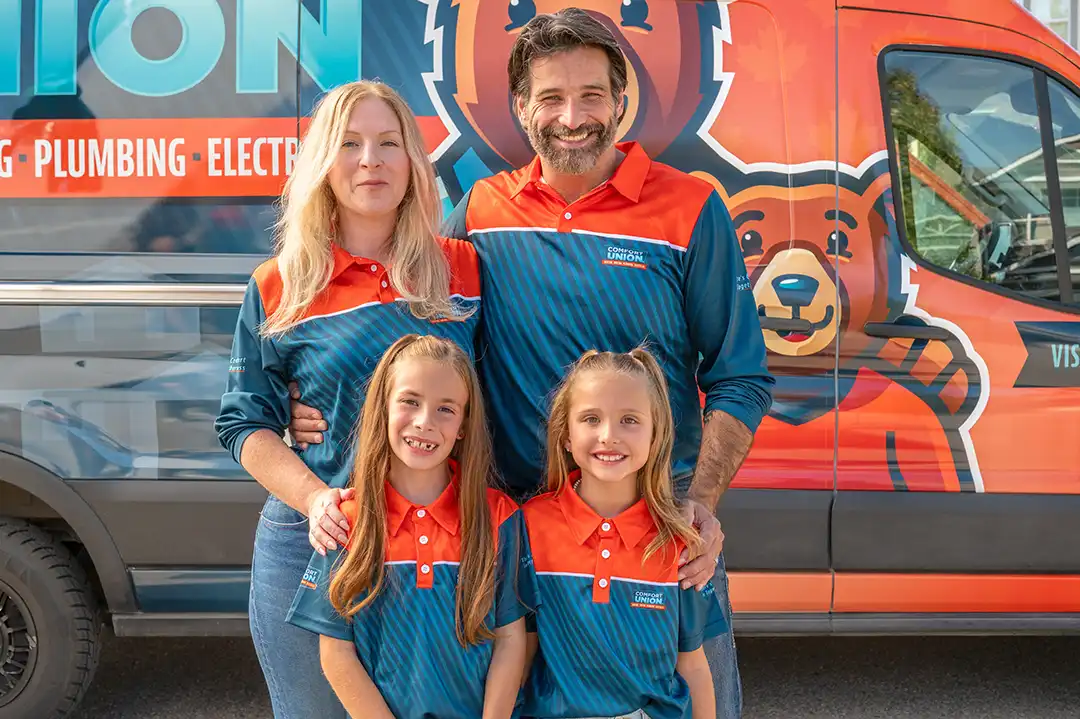
Fast, reliable furnace repair in Calgary. We diagnose and fix all makes and models to restore your home’s warmth quickly and safely.

Keep your system running smoothly with a professional furnace tune-up in Calgary. We clean, inspect, and optimize for peak efficiency and safety.

Breathe easier with professional furnace duct cleaning in Calgary. Remove dust, debris, and allergens for cleaner air and better system performance.





